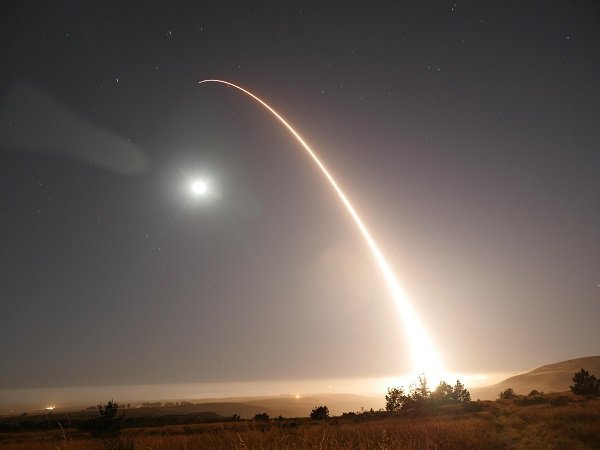
About every four years, the US administration updates its nuclear deterrence doctrine by issuing a document titled the “Nuclear Posture Review”. [NPR]. And until now it has been a matter of focusing mainly on Russia, whose nuclear arsenal almost matches that of the United States.
The most recent NPR was published in 2022. Like the previous ones, it affirms that the role of US nuclear weapons is to deter any attack and to reassure US allies. And to be ready to be used if deterrence fails.
However, the situation has since developed. In February 2023, Russia announced the suspension of its participation in the New Start disarmament agreement it had entered into with the United States. Due to expire in 2021, this text was extended for a period of five years due to lack of agreement between Washington and Moscow to redefine its terms.
Then, in November of the same year, the head of the Kremlin, Vladimir Putin, decided to cancel the ratification of the Comprehensive Nuclear-Test-Ban Treaty [TICEN]which the United States had been careful not to adopt.
At the same time, China appeared to be rapidly developing its nuclear arsenal, with its size increasing by around 75% between 2019 and 2023. It currently has 500 nuclear weapons. But according to Pentagon estimates, it will likely have twice as many by the end of the decade.
To complete the picture, North Korea pledged in January 2023 an “exponential increase in its nuclear arsenal,” after suggesting it would not hesitate to use it preemptively to “wipe out enemy forces” in the event of an imminent threat.
Hence the new guidelines, which US President Joe Biden secretly approved last March, according to information from the New York Times. This new nuclear strategy, the outlines of which are confidential, would thus aim to prepare the US for “possible coordinated nuclear confrontations with Russia, China and North Korea”.
Deputy spokesman for the National Security Council [NSC] of the White House, Sean Savett, confirmed the existence of this document entitled “Nuclear Employment Guidance”.
“If directives are classified, their existence is by no means secret. They do not constitute a response to any particular entity, country or threat,” stated Mr. Saved.
But while they were approved nearly six months ago, no “unclassified” notice of the doctrinal change has yet been submitted to Congress, according to the New York Times.
That said, Pranay Vaddi, head of arms control at the NSC, proposed a change in the US nuclear posture last June. Indeed, he had explained that “in the absence of any change in the opposing arsenals [comprendre en Russie, en Chine et en Corée du Nord]would the United States be “ready to move from modernizing its existing weapons to expanding its arsenal.”
At the moment, only Beijing has responded to the information from the American daily.
“China is seriously concerned about a report that the US has approved a strategic nuclear plan to focus on the rapid expansion of China’s nuclear arsenal,” Mao Ning, the Chinese Foreign Ministry spokesman, said on August 20. He added: “The US is selling the narrative of the Chinese nuclear threat and making excuses to seek strategic advantage.”
Chinese nuclear doctrine is based on three concepts: limited deterrence [ou stricte suffisance]effective defense and counterattack against enemy strategic locations. But since China has never been constrained by any disarmament treaty, the rapid development of its arsenal raises questions.
However, an editorial writer from the Global Times, a newspaper close to the Chinese Communist Party [PCC] had undoubtedly provided an element of response, in May 2021. “The number of nuclear warheads of the People’s Liberation Army must reach the number that makes the American elites shudder if they plan to engage in a military confrontation with China,” he wrote .